I am a strong advocate for intersectionality. I first heard the term during my time in undergrad (more specifically, my first semester in the social work program). Merriam Webster’s Dictionary says this about intersectionality:
It's been around since the late 1980's but intersectionality is a word that's new to many of us. It's used to refer to the complex and cumulative way that the effects of different forms of discrimination (racism, sexism, and classism) combine, overlap and yes, intersect—especially in the experiences of marginalized people or groups.
While my classmates oftentimes found humor in my constant “just thinking about intersectionality” comments, tweets and jokes, the statement was always rooted in extreme serious sentiment. Intersectionality is so important. Looking for the different intersections of people is so important. As individuals, we are made up of so much more than a single identity. While some identities may feel dominative over others, especially during different seasons of life, each are necessary to the holistic being of the person.
Intersectionality is regularly spoken of in reference to a person’s position in social and political climates as different intersections either add privilege or further oppress one’s life. Along with this, intersections are often thought of as race, sex, and class (as mentioned in the definition from Merriam Webster’s Dictionary).
I’d like to pose additional identities (including life circumstances, religious beliefs, mental health, etc.) in context of this holiday season. Thanksgiving, Christmas and New Year’s, for many, is an extended season of celebration – or the pressure to make it appear so is definitely part of mainstream culture. Celebration becomes the dominative identity surrounding these holidays when, for many, reality is filled with many emotions other than those of celebration. We can use Jesus as an example of these many intersections; it is fitting given we are in a time of waiting for his birth. Jesus most often holds the attributed identity as our Savior. However, Jesus is also fully human, fully divine, son of Mary and Joseph but also son of God, teacher, healer, friend, etc. Jesus felt happiness, sadness, anxiety and all other human emotions. His social and political context changed throughout his life and his emotions ebbed and flowed given different life circumstances. However, Jesus did show us how to approach life amid these feelings and circumstances: with love first.
As we encounter others this holiday season, remember that everyone possesses more identities than those we assume as “obvious” upon first glance. Even the celebration of Christmas looks different for each person. One approach to persons with unknown intersections is an approach from love first. Simply extending an act of kindness or love to each person, without assumption of their political, social or personal position in life. This speaks to the true message of Christmas – a season recognizing the greatest love that has been shown to us, as Christians.
